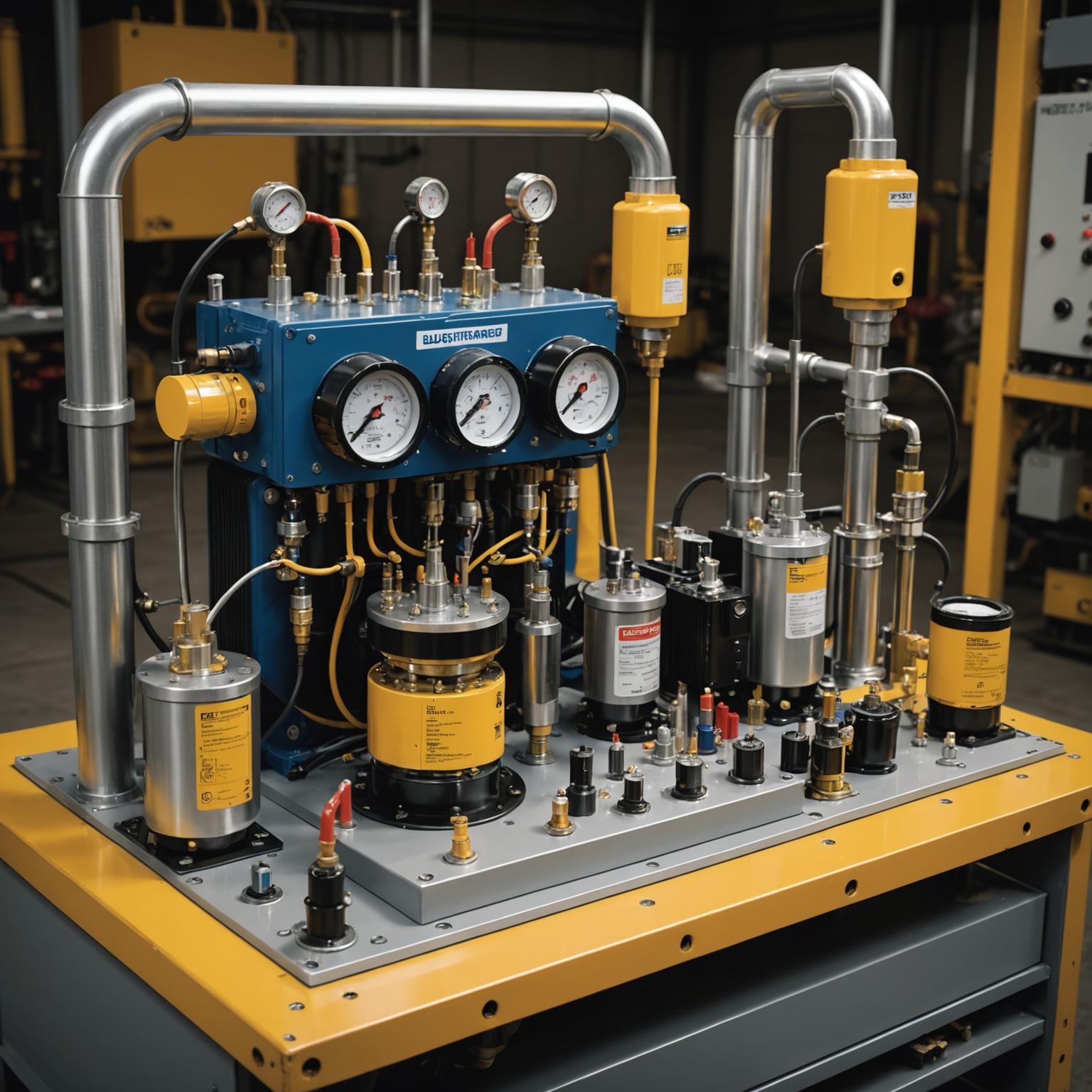The intricate world of power distribution relies heavily on the silent, steadfast performance of transformers. These colossal units, so crucial to our daily lives, are more than just coils and cores; they are complex systems supported by a host of essential components. A vital transformer accessor, often overlooked but utterly indispensable, plays a pivotal role in ensuring the longevity, safety, and operational efficiency of the entire apparatus. Understanding these accessories is key to appreciating the engineering marvel that is a power transformer and forms the bedrock of effective transformer maintenance.

Guardian of the Golden Fluid: The Vital Oil Level Indicator
The heart of many power transformers beats with a special insulating liquid, commonly known as transformer oil. Monitoring the level of this vital fluid is paramount, and this task falls to the oil level indicator. Often appearing as a clear gauge or a float-actuated mechanism visible on the conservator tank or the main tank, this device provides a direct window into the transformer’s circulatory system. A low oil level can compromise insulation and cooling, leading to overheating and potential faults. Conversely, an excessively high level might indicate internal issues or problems with the oil preservation system. These indicators, sometimes magnetic oil gauges (MOG), are not mere passive displays; they are active sentinels, and their regular observation is a fundamental aspect of routine checks, ensuring the transformer is never running dry or overfilled with its precious transformer oil.
Sentinel Against Surge: Understanding Pressure Relief Devices
Transformers, under certain fault conditions or extreme operational stresses, can experience a rapid buildup of internal pressure. Without a means of safe release, this pressure could lead to catastrophic tank rupture. This is where the pressure relief device (PRD) or explosion vent comes into play. Typically a spring-loaded valve or a diaphragm designed to rupture at a predetermined pressure, the PRD acts as a crucial safety valve. Its design allows for the rapid expulsion of gas and oil, mitigating the risk of violent failure. These devices are often unassuming, perhaps a dome or a piped vent on the transformer tank cover, yet their robust construction ensures they are ready to act instantaneously when needed, safeguarding the transformer and surrounding environment. Their proper functioning is a critical check during any comprehensive transformer maintenance schedule.
The Heat Watchers: Temperature Monitoring Essentials
Temperature is a critical parameter in transformer operation. Excessive heat can accelerate the aging of insulation and degrade the transformer oil, significantly shortening the transformer’s lifespan. To keep a vigilant eye on thermal conditions, transformers are equipped with temperature indicators. These can range from simple dial-type thermometers measuring the top oil temperature to more sophisticated winding temperature indicators (WTIs) that simulate the temperature of the hottest spot in the windings. These devices often feature contacts that can trigger alarms or even initiate a trip signal if temperatures exceed safe limits. The information they provide is invaluable for understanding the transformer’s load conditions and for early detection of potential cooling problems or internal faults. Modern systems may even integrate these readings into remote monitoring networks for continuous oversight.
The Unseen Protector: The Ingenious Buchholz Relay
Perhaps one of the most well-known and ingenious transformer accessor units is the Buchholz relay. Installed in the pipe connecting the main transformer tank to the conservator tank, this gas-and-oil-actuated relay is a remarkable piece of protective engineering. It is designed to detect a wide array of faults. Slow gas accumulation, perhaps from minor incipient faults or cellulose degradation, will cause the oil level within the relay to drop, actuating an alarm contact. A more severe fault, generating a rapid surge of gas and oil towards the conservator, will trigger a second contact, initiating a trip signal to de-energize the transformer. The Buchholz relay’s ability to differentiate between minor and major issues makes it an indispensable guardian, providing early warnings and protecting against extensive damage.
Conduits of Power: The Critical Role of Bushings
Bushings are the insulated conductors that provide a path for electrical current to flow into and out of the transformer tank while maintaining electrical isolation from the grounded tank. These can be striking in appearance, often made of porcelain or, increasingly, polymer materials, resembling large, robust insulators. The integrity of these bushings is paramount. Cracks, contamination on their surface, or deterioration of their internal insulation can lead to flashovers, short circuits, and significant transformer damage. Regular inspection for cleanliness, physical damage, and signs of oil leakage (in oil-filled bushings) is a crucial part of transformer maintenance. Some advanced bushings also incorporate capacitance taps, allowing for diagnostic testing of their condition.
Preserving Purity: Systems for Transformer Oil Integrity
Maintaining the quality of the transformer oil is essential for its insulating and cooling properties. Several accessories contribute to this. The conservator tank, an auxiliary tank mounted above the main tank, allows for the expansion and contraction of oil with temperature changes, minimizing contact between the hot oil in the main tank and the atmosphere. To prevent moisture and oxygen from contaminating the oil as it ‘breathes’, a desiccant breather is often fitted to the conservator. This breather contains silica gel or a similar absorbent material that strips moisture from the incoming air. The condition of this desiccant, often indicated by a color change, needs regular monitoring and replacement when saturated. Sealed tank designs or nitrogen blanketing systems offer alternative methods to protect the transformer oil from atmospheric degradation.
The Lifeblood: A Closer Look at Transformer Oil
While discussing accessories, it’s impossible not to emphasize the role of the transformer oil itself. This highly refined mineral oil (or sometimes synthetic ester or silicone fluid) serves dual purposes: it provides electrical insulation between the windings and other live parts, and it acts as a coolant, transferring heat from the core and windings to the tank walls and radiators. The dielectric strength and chemical stability of the oil are critical. Contamination by moisture, particles, or dissolved gases can severely degrade its performance. Regular sampling and analysis of the transformer oil are therefore cornerstone practices in any predictive maintenance program, providing deep insights into the internal health of the transformer and the effectiveness of its protective accessories.
Synergy in Action: Accessories and Proactive Transformer Maintenance
Each transformer accessor, from the humble drain valve to the sophisticated protective relay, forms an integral part of a larger ecosystem designed for optimal performance and safety. They are not merely add-ons but essential tools that facilitate and inform proactive transformer maintenance strategies. Data gleaned from oil level indicators, temperature gauges, pressure devices, and the operational status of relays like the Buchholz provides operators and maintenance crews with the information needed to make informed decisions. This allows for scheduled interventions, timely repairs, and the prevention of minor issues escalating into major failures. The careful upkeep and regular testing of these accessories ensure they perform their designated functions reliably, contributing significantly to extending the operational life of the transformer and ensuring the stability of the power grid.
In conclusion, the array of transformer accessories works in concert to protect, monitor, and maintain the health of these critical assets. Their individual designs are often marvels of specific engineering focus, yet it is their collective operation that truly underscores their importance. From ensuring the quality of the transformer oil to providing safe operational parameters and early fault detection, these components are the unsung heroes of power transformation, silently working to keep the lights on and industries powered. A thorough understanding and diligent attention to each transformer accessor are fundamental to robust asset management and the reliable delivery of electricity.

